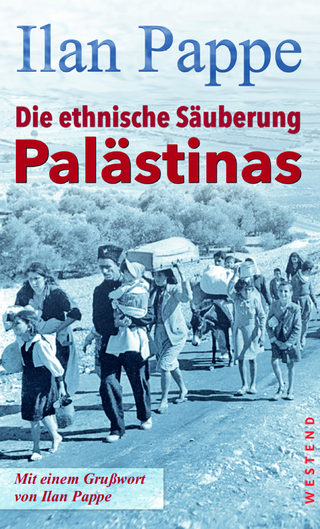
Geographies of Nationhood
Oxford University Press (Verlag)
978-0-19-284432-3 (ISBN)
Geographies of Nationhood examines the meteoric rise of ethnographic mapmaking in the nineteenth and early twentieth centuries as a form of visual and material culture that gave expression to territorialised visions of nationhood. In the Russian Empire's Baltic provinces, the development of ethnographic cartography, as part of the broader field of statistical data visualisation, progressively became a tool that lent legitimacy and an experiential dimension to nationalist arguments, as well as a wide range of alternative spatial configurations that rendered the inhabitants of the Baltic as part of local, imperial, and global geographies. Catherine Gibson argues that map production and the spread of cartographic literacy as a mass phenomenon in Baltic society transformed how people made sense of linguistic, ethnic, and religious similarities and differences by imbuing them with an alleged scientific objectivity that was later used to determine the political structuring of the Baltic region and beyond. Geographies of Nationhood treads new ground by expanding the focus beyond elites to include a diverse range of mapmakers, such as local bureaucrats, commercial enterprises, clergymen, family members, teachers, and landowners. It shifts the focus from imperial learned and military institutions to examine the proliferation of mapmaking across diverse sites in the Empire, including the provincial administration, local learned societies, private homes, and schools. Understanding ethnographic maps in the social context of their production, circulation, consumption, and reception is crucial for assessing their impact as powerful shapers of popular geographical conceptions of nationhood, state-building, and border-drawing.
Catherine Gibson is a historian of modern Eastern Europe and the Russian Empire. She is currently a Research Fellow in the School of Theology & Religious Studies at the University of Tartu. She received her PhD from the European University Institute in 2019. She is co-editor of The Palgrave Handbook of Slavic Languages, Borders, and Identities and her research has appeared in the journals Past & Present, Journal of Social History, Journal of History Geography, and Nationalities Papers.
Introduction
1: Networks of Cartographic Influence, Patronage, and Reception
2: Provincial Map Production and the Rise of Cartographic Entrepreneurship
3: The Baltic Question in Cartographic Imagination
4: Mapping Latvians in Local and Global Perspectives
5: Post-War Ethnic Boundary Mapping from Above and Below
Epilogue: Afterlives of Maps
| Erscheinungsdatum | 26.04.2022 |
|---|---|
| Reihe/Serie | Oxford Studies in Modern European History |
| Zusatzinfo | More than 50 black and white and colour images/maps |
| Verlagsort | Oxford |
| Sprache | englisch |
| Maße | 161 x 241 mm |
| Gewicht | 710 g |
| Themenwelt | Geisteswissenschaften ► Geschichte ► Hilfswissenschaften |
| Geschichte ► Teilgebiete der Geschichte ► Kulturgeschichte | |
| ISBN-10 | 0-19-284432-6 / 0192844326 |
| ISBN-13 | 978-0-19-284432-3 / 9780192844323 |
| Zustand | Neuware |
| Haben Sie eine Frage zum Produkt? |
aus dem Bereich


